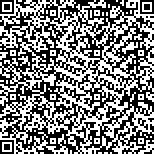| 摘要: |
| 从自然发病及人工感染患病濒死中国对虾幼体中分离出38株细菌,研究其形态特征,生理、生化特性及对中国对虾幼体的致病性。结果表明,38株分离物均为革兰氏阴性杆菌,菌体为杆状或短杆状,极生单鞭毛运动,不发光,氧化酶呈阳性,发酵葡萄糖产酸,TCBS平板上生长,菌落呈黄色或绿色,对弧菌抑制剂0/129(150 g/ml)敏感,此均为弧菌属的典型特征,属于弧菌。其中26株细菌被归为同一类群,参照伯杰氏细菌学鉴定手册(1994年,第9版)鉴定表明,该菌同哈维氏弧菌(Vibrio harveyi)最为接近;另外,Biolog系统鉴定表明也为哈维氏弧菌,因此定名为哈维氏弧菌。利用浸泡感染法以2.5×103-2.5×107 cfu/ml浓度的细菌感染不同发育时期(无节幼体期、蚤状期、糠虾期和仔虾期)的中国对虾幼体。结果表明,该病原菌主要感染中国对虾幼体的无节幼体晚期、蚤状期和糠虾早期并导致其大量死亡,而在仔虾期感染死亡率较低,并且2.5×104 cfu/ml以上浓度的病原菌即可导致蚤状幼体严重感染死亡。由此可见, 所分离的致病菌对中国对虾蚤状期幼体具有较强的致病力。人工感染试验结果表明, 所分离的哈维氏弧菌为本次中国对虾幼体爆发性流行病的病原菌。 |
| 关键词: 中国对虾幼体 致病菌 弧菌 哈维氏弧菌 |
| DOI: |
| 分类号: |
| 基金项目:欧盟项目,TS3-CT-94-0269 |
附件 |
|
| ISOLATION AND BIOLOGICAL CHARACTERISTICS OF VIBRIO HARVEYI AFFECTING HATCHERY-REARED PENAEUS CHINENSIS LARVAE |
|
LI Jun,XU Huai-shu
|
|
College of Marine life Sciences, Ocean University of Qingdao, Qingdao, 266003
|
| Abstract: |
| From April to May 1996, an epizootic occurred among Penaeus chinensis larvae, especially at the stage of zoeae, in some hatcheries located at Fengcheng, near Qingdao, Shandong Province. The mortalities were up to 80%. A total of 38 strains of bacteria, which were isolated or re-isolated from infected moribund larvae of P. chinensis, had morphological, physiological and biochemical characteristics of the genus Vibrio: Gram-negative, short rods and motile by means of a single polar flagellum. Growth on TCBS agar. Oxidase reaction, fermentation of glucose and sensitivity to the vibriostatic agent 0/129 were positive. The bacteria produced acid without gas from glucose. Among them, 26 strains seemingly belong to the same species, which were related to Vibrio harveyi on the basis of a comparison with the data of Bergey' s Manual of Determinative Bacteriology (9th edition). The results have been proved by the identification results of Biolog system. A dominant Vibrio isolate was proved to be pathogenic to larvae of P. chinensis and was a causative agent for epizootic disease in larvae shrimp. Shrimp larvae challenged with 2.5×103-2.5×107 cfu/ml bacteria by immersion method showed significant mortalities in the nauplii, zoeae and mysis1-2 larvae, but not in the postlarvae. At the zoeal stages, the isolate caused severe infection with up to 2.5×104 cfu/ml of bacteria in the rearing seawater, indicating that the causative agent was more virulent to zoeal larvae of P. chinensis than at other stages. This study is the first report in China on the pathogenicity of V. harveyi in the larvae of P. chinensis. |
| Key words: Penaeus chinensis, larvae, Vibriosis, Vibrio, Vibrio harveyi |
